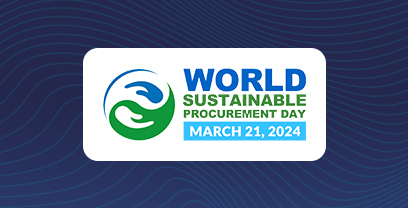Blog »
Delivering Step Change Improvements in ESG Performance

by Alex Saric
Environmental, social and governance (ESG) initiatives are rapidly becoming boardroom priorities and companies are increasingly investing in these initiatives to achieve a competitive advantage in the marketplace. Likewise, customers and employees are increasingly demanding that companies are environmentally conscious. More and more companies are adopting a low-carbon footprint and sustainable approach to procurement, and for good reason. Investment in ESG initiatives is growing as companies recognize the benefits of tackling the structural issues of modern capitalism.
As we review key considerations in the procurement of ESG products and services, there remains a significant disconnect between words and actions. For example, a recent study by Forrester Consulting commissioned by Ivalua found that while a majority of organizations said all of the ESG areas listed in the study were a very high priority, only 23-33% had any formal policies or targets in place.
As leaders look to accelerate results, we take note from the pioneers who have pivoted, created new strategies, and learned from their efforts. Through our research and close work with early ESG adoptees, such as IKEA and Covea, three lessons stand out. Most notably, these companies must make progress on these issues to be sustainable in an increasingly competitive world.
Incentivize Procurement
Everything starts with people. Unsurprisingly, the top challenge noted in this survey in reducing your overall carbon footprint was a lack of procurement incentives. Leading organizations include ESG key performance indicators (KPIs) in procurement performance reviews and compensation; laggards omit them. Words and good intentions are rarely enough to drive behavioral changes. Altering procurement’s management by objectives (MBOs) is also a good test of whether executive leadership is willing to put its money where its mouth is.
Collaborate to Win
Ranking as the third most significant obstacle in this survey and the top strategy to improving sustainability, we reach collaboration. Minimizing any cost trade-offs and driving ongoing improvements, collaboration gives your suppliers more flexibility when meeting requirements, setting progressive ESG goals and actively communicating. Digitization is key to enabling efficient, effective collaboration with a broad set of suppliers, not just a few strategic ones. Source-to-Pay (S2P) platforms can enable this collaboration, from secure information sharing–to automating action and improvement plans. New collaborative platforms, such as Source-to-Pay (S2P), can enable your business to automate action and improvement plans, gain faster access to the right information and enable you to take better decisions.
Enable Transparency
Two of the top five challenges and strategies in this study involve transparency. Organizations struggle to assess the ESG performance of their suppliers and are generally abysmal when it comes to understanding the sub-tier, yet this is where most issues lie. This is another area where spend management technology can help. Effective solutions offer a single supplier record for a 360-degree view, with 3rd party ESG information seamlessly integrated, and the ability to extend access to suppliers to directly enter their suppliers to map the full supply chain.
Key Takeaways
During the COVID-19 pandemic, procurement teams rose to the challenge for the benefit of their organizations and society. To tackle climate change and other ESG-related challenges, we need procurement to rise up again.
While setting improvement goals in collaboration with all stakeholders is an important consideration for over half of our survey respondents in improving sustainability, gaining greater visibility into the supply chain is also key. This is an area of high risk which also presents challenges in several areas, including monitoring labor practices and environmental performance. However, procurement leaders point to a lack of incentives to reduce their carbon footprint – to the extent that sustainability is not even considered as a KPI.
With the right incentives and right tools, you can succeed and as you consider taking the next steps, recall the words of author Robert Swan – “the greatest threat to our planet is the belief that someone else will save it.”
Ready to put your improvement plan into action? Talk with an Expert Today.

Alex Saric
Chief Marketing Officer
Alex has spent over 15 years of his career evangelizing Spend Management, shaping its evolution and working closely with hundreds of customers to support their Digital Transformation journeys. As CMO at Ivalua, Alex leads overall marketing strategy and thought leadership programs. Alex also spent 12 years at Ariba, first building and running the spend analytics business as General Manager. He then built and led Ariba’s international marketing team until successful acquisition by SAP, transitioning to lead business network marketing globally. Earlier, Alex was a founding member of Zeborg (acquired by Emptoris)where he developed vertical Procurement applications. He began his career in the U.S. Cavalry, leading tank and scout platoons through 2 combat deployments. Alex holds a B.S. in Economics from the U.S. Military Academy at West Point and an international M.B.A. from INSEAD.
You can connect with Alex on Linkedin




